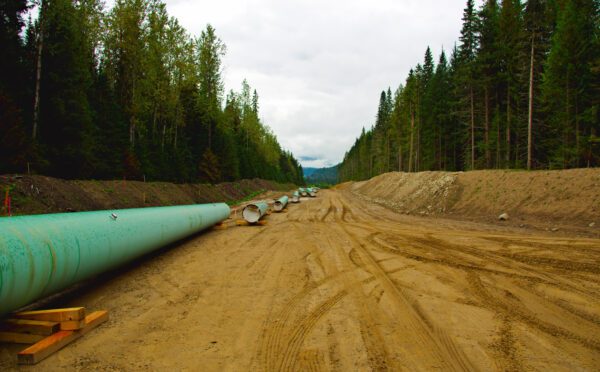
Alberta has recently initiated legislative and regulatory changes to take advantage of worldwide demand for metals and critical minerals that are essential for transition to a low carbon economy. Once finalized and implemented, the changes will satisfy a central component of Renewing Alberta’s Mineral Future [PDF] — the province’s mineral strategy and action plan (Alberta’s Mineral Strategy) — and further the objectives of the federal Canadian Minerals and Metals Plan [PDF] (Federal Plan). The new regime will seek to improve regulatory clarity and policy certainty to increase investor confidence and encourage responsible development of materials such as lithium for batteries in electric vehicles and renewable energy storage; vanadium for energy storage systems; uranium to generate nuclear energy; rare earth elements for batteries, electronics, and wind turbines; potash for fertilizer; and other valuable metals and minerals.
In this post, we review the strategic directions provided by Alberta’s Mineral Strategy and the Federal Plan, and the latest steps taken to advance a new regime for the development of metals and critical minerals in Alberta.
Alberta’s Mineral Strategy
Alberta’s Mineral Strategy outlines a plan to unlock Alberta’s untapped mineral resource potential and help meet increasing global demand for mineral resources, while creating jobs and attracting investment. The Mineral Strategy also encourages responsible and efficient exploration, development, manufacturing, and recycling of minerals and mineral products.
The Mineral Strategy focuses on the following six key areas for actions to support and achieve this vision:
- Increase public geoscience: Target extensive mineral mapping and better access to public geoscience information to develop a fulsome understanding of Alberta’s mineral resources.
- Enhance the fiscal and regulatory environment: Provide regulatory clarity and policy certainty to adopt a life-cycle perspective to increase investor confidence and ensure responsible development.
- Promote responsible development: Work towards upholding and enhancing Alberta’s stringent environmental standards throughout a project’s lifecycle and integrating mineral opportunities into land use planning.
- Advance opportunities for Indigenous Peoples: Build a better understanding of Indigenous Peoples’ values and perspectives and enhance Indigenous economic development opportunities in the minerals sector.
- Develop public awareness and a skilled workforce: Ensure Albertans are well informed, enabled and encouraged to participate in the minerals sector and get Albertans back to work.
- Promote innovation and industrial development: Promote Alberta as a destination of choice for mineral investments and expand Alberta’s scientific and industrial capacity to take full advantage along the mineral value chains, from raw minerals to processed products.
Federal Plan for minerals and metals
Similar to Alberta’s Mineral Strategy, the Federal Plan aims to secure Canada’s competitive position as a global mining leader and lay the foundation for a future-looking minerals and metals industry. Like Alberta’s Mineral Strategy, the Federal Plan focuses on six areas for supporting a competitive, sustainable, and responsible minerals and metals industry, and these areas have some overlap with those identified in Alberta’s Mineral Strategy. The six areas identified in the Federal Plan are:
- Economic development and competitiveness: Make Canada’s business and innovation environment for the minerals sector the world’s most competitive and most attractive for investment.
- Advancing the participation of Indigenous Peoples: Increase economic opportunities for Indigenous Peoples and supporting the process of reconciliation.
- The environment: Protect Canada’s natural environment to underpin a responsible, competitive industry. Make Canada a leader in building public trust, developing tomorrow’s low-footprint mines and managing the legacy of past activities.
- Science, technology and innovation: Develop a modern and innovative industry supported by world-leading science and technology — across all phases of the mineral development cycle.
- Communities: Work towards communities welcoming sustainable mineral development activities for the benefits they deliver.
- Global leadership: Developing a sharpened competitive edge and increased global leadership for Canada.
Notably, the Federal Plan was the result of collaborative efforts by the federal government, the Alberta government, and other provincial and territorial governments; so it comes as no surprise that Alberta’s Mineral Strategy is significantly aligned with the Federal Plan. The Alberta government has committed to continued participation in implementing the Federal Plan, in addition to implementing its own Mineral Strategy.[1]
Canada has also worked with the United States to finalize the Canada-U.S. Joint Action Plan on Critical Minerals Collaboration to advance the countries’ mutual interest in improving critical mineral security and ensuring the future competitiveness of their mineral industries. This joint action plan presents opportunities for Alberta and other parts of Canada to attract investment in exploring and mining projects while also creating jobs and economic growth in various downstream industries,[2] consistent with both the Federal Plan and Alberta’s Mineral Strategy.
Introduction of the Mineral Resource Development Act
The Alberta government introduced Bill 82: Mineral Resource Development Act (MRDA) on November 4, 2021, and thereby took a first step towards the Mineral Strategy’s vision for an enhanced fiscal and regulatory environment. The MRDA received royal assent on December 2, 2021, but will not come into force until proclamation. This will not likely occur until the Alberta government and Alberta Energy Regulator (AER) finish developing regulations and rules to establish a more detailed framework and requirements under the MRDA.
The MRDA will establish the AER’s mandate as the life cycle regulator of Alberta’s mineral resources under the Act, including critical minerals [PDF] (i.e., identified as critical for infrastructure, electronics, national security interests, and in the transition to a low carbon economy), gold, diamonds, and iron, among other materials. Under the MRDA, the AER’s mandate over mineral resources will include authority over scheme approvals, well and facility licences, mine site permits and licences, processing plant approvals, approval and licence transfers, and management of reclamation and abandonment liabilities. The AER’s powers to carry out its mandate under the MRDA are similar to those the AER holds with respect to regulation of geothermal resources (see our earlier post) and petroleum, natural gas, and coal resources.
Importantly, the MRDA will apply to the development of mineral resources in the province, whether development commenced before or after the Act came into force. It will also allow the AER to re-designate wells and facilities (and the associated licences) under the Geothermal Resource Development Act and Oil and Gas Conservation Act (OGCA) as being for the purposes of the MRDA. This indicates the potential under the MRDA for repurposing existing wells and facilities in Alberta for mineral development, such as lithium brine recovery.
One key issue that needs to be addressed by a new mineral resources regime is the management of abandonment and reclamation obligations (ARO). For oil and gas assets, Alberta has overhauled the management of ARO since 2020, in response to concerns that ARO costs will fall on the public when licensees become insolvent. This has included the implementation of a new Liability Management Framework (LMF), which provides for more rigorous AER oversight and assessments over the oil and gas energy life cycle (see our most recent post on the LMF). It is not clear currently whether the intent is for the LMF (or a similar separate framework) to apply with respect to mineral resources under the MRDA. However, in a recent AER licensee eligibility decision [PDF] regarding an application for brine production well licenses under the OGCA, the AER stated that once the MRDA is proclaimed, such wells will be regulated by the MRDA and the rules and directives issued thereunder, and will be “subject to a comprehensive liability program and may be subject to additional regulation and conditions.”
Next steps
To complete the evolving regime for mineral resources in the province, the next steps are for the Alberta government to develop regulations under the MRDA and for the AER to issue rules and directives with further detailed requirements. The Alberta government’s 2022 budget highlighted the work remaining on this regime by including $41 million over the next three years to establish the new regulatory frameworks for both geothermal and mineral resources.[3]
The AER has split mineral resources under the MRDA into two distinct groups to carry out stages of public engagement and development of rules and directives: (1) brine-hosted minerals (typically found in underground saltwater and mostly extracted through well infrastructure); and (2) conventional “hard rock” minerals that are extracted through more traditional mining or quarrying.[4] While engagement continues on these minerals and further regulatory details remain outstanding, it is possible that the AER may issue well licences under the OGCA for brine production wells to evaluate the potential for critical minerals, such as the well licence that the AER issued for lithium brine extraction east of Olds, Alberta in early June 2022.
Although work remains to complete a new regime for metals and critical minerals in Alberta, the MRDA is an important first step towards a more predictable regulatory framework that enables Alberta to capitalize on worldwide demand for materials essential to the energy transition.
[1] Alberta’s Mineral Strategy [PDF] at 6.
[2] Natural Resources Canada, News Release, “Canada and U.S. Finalize Joint Action Plan on Critical Minerals Collaboration” (January 9, 2020), online: https://www.canada.ca/en/natural-resources-canada/news/2020/01/canada-and-us-finalize-joint-action-plan-on-critical-minerals-collaboration.html.
[3] Government of Alberta, Budget 2022: 2022-25 Fiscal Plan [PDF] at 140.
[4] Alberta Energy Regulator, “Mineral Resource Development”.

